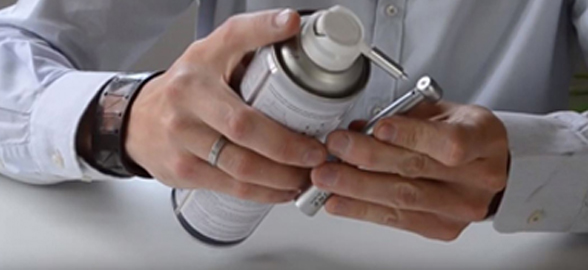Dental gutta-percha was first used in dentistry over 170 years ago by Edwin Maynard, an American endodontist. Despite the continuous research and search for new innovations in root canal filling methods, gutta-percha is still one of the most successful and widely used options in clinics around the world, thanks to its ability to completely seal a root canal and prevent any entry of bacteria into the area, preventing further complications and providing a permanent solution for the patient.
Before moving on to the practical aspects of gutta-percha and what it is used for in the dental practice, it is useful to understand the origins and composition of this material. Gutta-percha is a natural rubber material obtained from Palaquium trees, native to South-east Asia. The trees are felled, allowed to coagulate, and then the rubber-like sap is collected and shaped into bricks for shipping. Gutta-percha has been used in many industries for a variety of purposes, but this article will focus on uses within the dental sector, and more specifically, for root canal fillings.
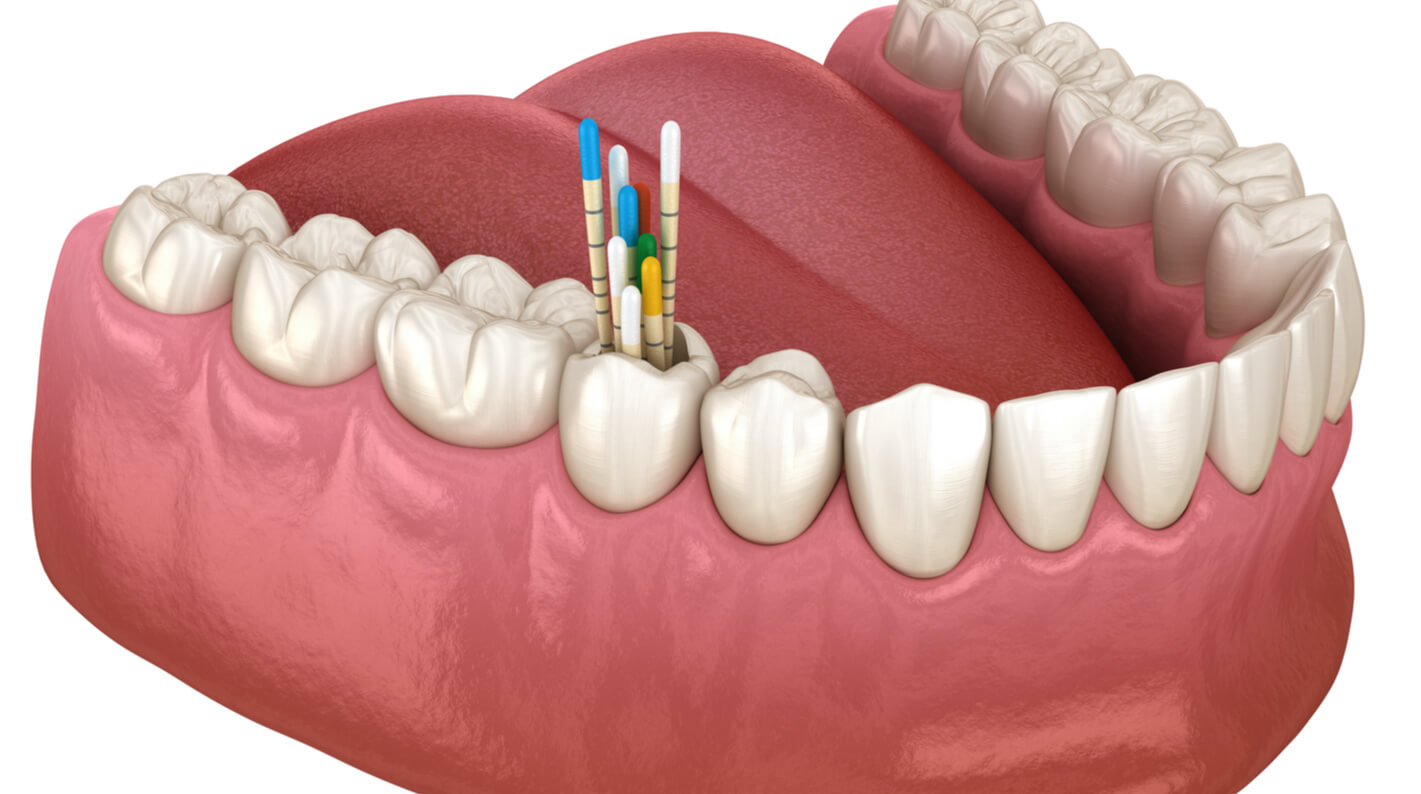
Why are gutta-percha tips so popular in root canal filling procedures?
- Firstly, as gutta-percha is a natural material, it has low toxicity. Previously, there were concerns about the cadmium content, a type of metal, in gutta-percha tips, but this has been proven to be false. It's very rare for gutta-percha to contain cadmium as part of its composition, usually any cadmium found in the tips is just a trace from the manufacturing methods. Furthermore, the FDA allows safe consumption of 15 µg/g (ppm) in food, and a study by the International Association for Dental Research (IADR) confirmed that endodontic gutta-percha tips contain an average of 0.10 µg in each tip, demonstrating that the cadmium content does not reach the maximum recommended intake.
- Gutta-percha has also been commended for its low allergic risk. In fact, very few cases of allergic reactions among patients with latex allergies have been reported with the use of gutta-percha; however, it is advisable to discuss this low risk with each patient.
- Due to the composition of gutta-percha tips, they are radiopaque and therefore visible on an X-ray. This is vital for endodontists, as it allows them to clearly identify to what extent the gutta-percha tip has filled the cavity and to what extent it has been sealed.
- Finally, as gutta-percha tips are a rubber-like material, they can be heated up and softened. This means that an endodontist can easily remove the gutta-percha tips in future procedures.

Are there any disadvantages of using gutta-percha compared to other methods of root canal filling?
Unfortunately, gutta-percha is not an adhesive material. This means that additional cements are needed to fully seal the filling and create an impenetrable barrier. Don't worry! At Dentaltix, we have a category compiled specifically for endodontic sealing cements that contains a wide variety of sealants so you can make sure you are fully equipped for gutta-percha endodontics.
The two main methods of gutta-percha obturation:
Traditionally, the main technique for the use of gutta-percha in root fillings was cold lateral condensation. This method consists of physically pressing the cold gutta-percha tips into the root canal that has been filled and cleaned. A cement is then applied to bond the gutta-percha to the canal and form a long-term permanent repair of the empty root canal.
However, since the discovery and use of gutta-percha in dentistry, further developments have taken place. Primarily, this has been the use of thermoplastic gutta-percha in root canal fillings. This takes advantage of the properties of gutta-percha that allow it to soften and become more adhesive and viscous when heated. This also means that less cement is needed to completely seal the root canal. We have several types of condensers and gutta-percha instruments available on our website for this method. Extensive research has been done on both of these methods, but broadly speaking, most of the evidence suggests that both processes are very effective and depend on the preference of the dentist. If you want to know more about this area, there is an article on our blog that goes into more detail about thermoplastic fillings.

How do we identify which type and size of gutta-percha is right for our patients?
Firstly, there are two types of gutta-percha: alpha and beta. Alpha is the most commonly used, especially in thermoplastic gutta-percha, as it tends to shrink less and has more viscous and adhesive characteristics when heated, compared to beta, which is used for cold filling techniques, where it is more flexible when cold.
There are a couple of main methods used by manufacturers to distinguish the size and usage of gutta-percha tips:- The first of these methods is through an ISO code. You may have seen this form of coding on dental files or burs. The method uses a colour code on the gutta-percha tips to distinguish the size. The key measurements of a gutta-percha tip in the dental industry are its length, taper and radiopacity.
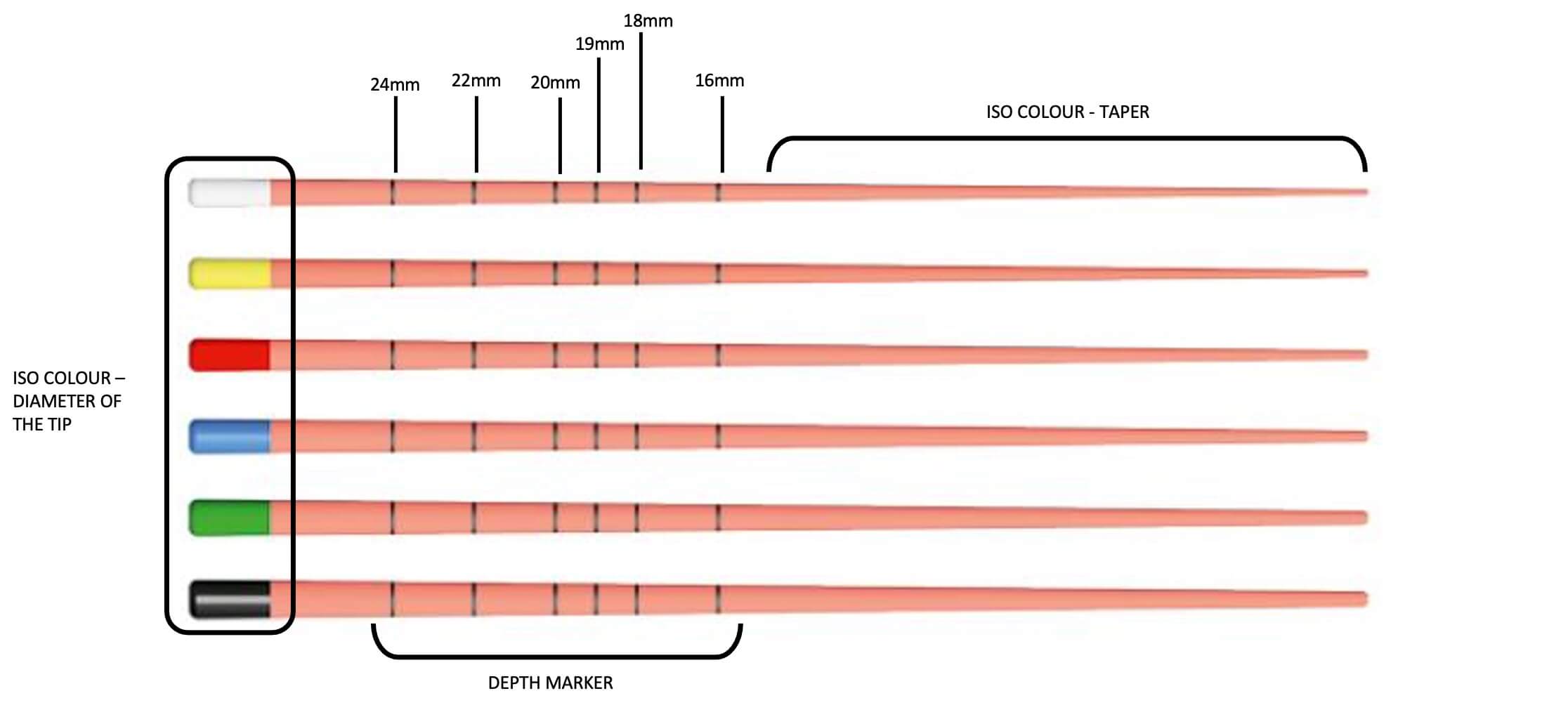
The ISO code classifies the tips according to head diameter and taper size (e.g. an ISO coding of 40/04 means that the tip diameter is 0.4 mm and the taper is 0.04 mm per millimetre of the tip). The colour of the gutta-percha tip is therefore a clear identification of its size, facilitating the dentist in their procedures and avoiding errors or confusion.
The useful part of the ISO coding is that, if used with endodontic files that are also classified by the ISO code, the gutta-percha needed is simply the same as the hole created in the canal by the file. These tips are not only coloured by their ISO, but are also marked with fine lines along the tip to help the dentist identify the depth to which the tip has been inserted.
- The other method of grading is gutta-percha tips which are not standardised. These tips are not colour-coded or marked at all and are classified simply by their size. Typical conventional sizes are extra-fine (XXF), extra-fine (XF), fine (F), medium (M), large (L) and extra-large (XL).
At Dentaltix, we have hundreds of gutta-percha products available to suit your needs. Here are our top picks:
.02 Taper Gutta-Percha Tips (120pcs)
Specifically designed with the highest quality gutta-percha and very strict tolerances.
- Made by hand.
- 2% Taper.
- High radiopacity.
- Highly flexible for ideal working capacity.
- They come in a practical anti-slip cassette to avoid the tips from falling out.
- Also available in 0.04 and 0.06 taper and 60 pcs packs.
The packaging of the gutta-percha tips is primarily made of recyclable materials, always guaranteeing the highest quality and hygiene conditions for the products and, thanks to an agreement with The Gravity Wave, the same amount of plastic is collected from the Mediterranean Sea, its coasts and ports as they generate each month.
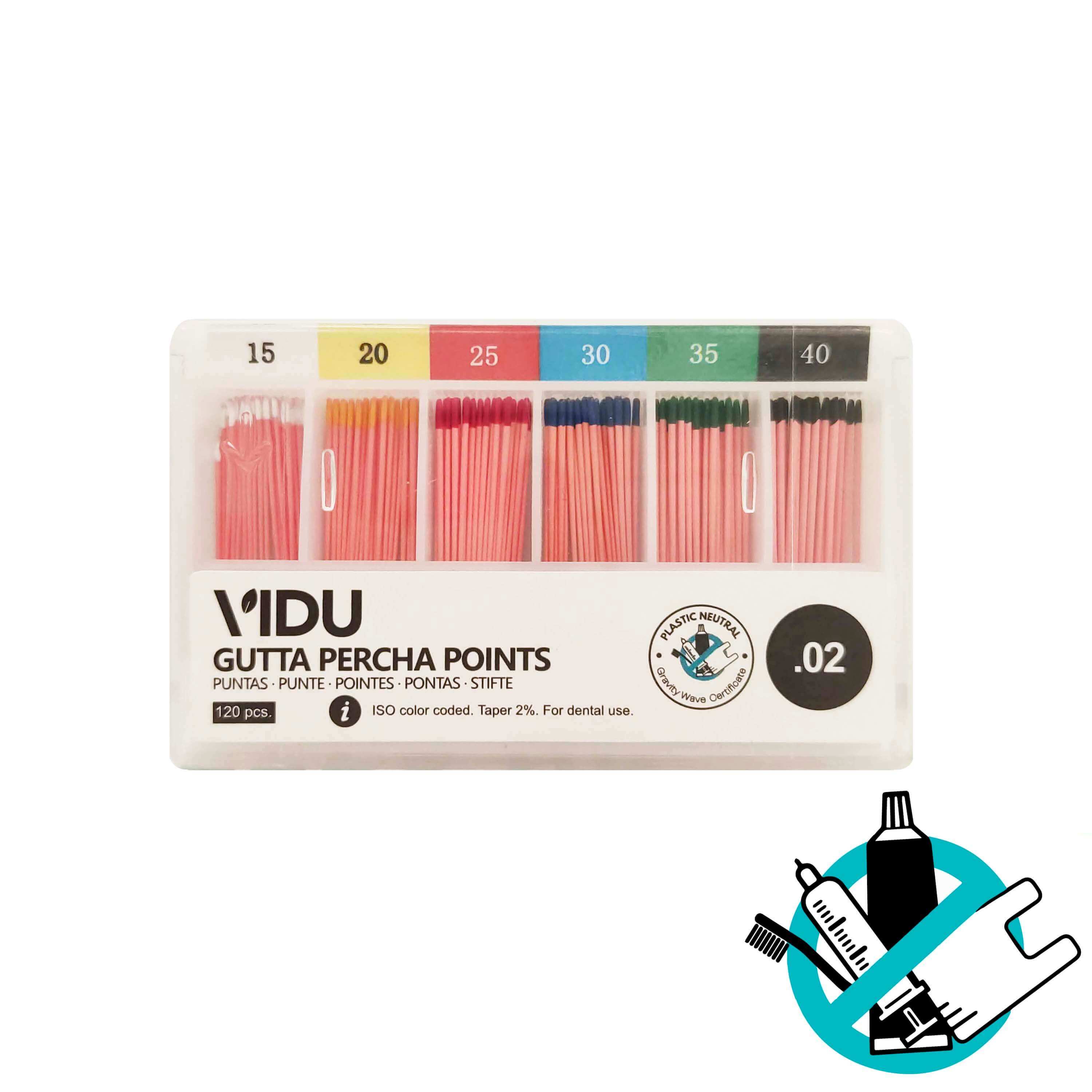
m-G-Fill Easy (60 uds) Gutta-Percha Tips
Specifically designed to be used with the mConic Easy files, which provide:
- Flexibility.
- Various tapers.
- Resistance to breakages.
- Continuous movement for a better barrier.
- Cleanliness and safety in root canal preparation.
When using the mConic Easy and mConic Flex rotary files, the use of an endodontic motor with torque and speed control is recommended. The canals should be permeabilised with hand files and rotary permeability files.
If you are interested in Medicaline's gutta-percha tips, read our article exclusively discussing their ranges.
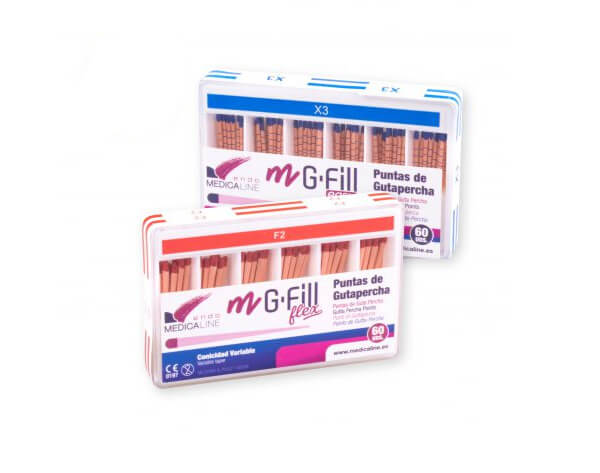
Dentsply Pink Pirata Gutta-Percha Tips (100pcs)
Available in different conventional sizes (X-FINE, FINE, LARGE, X-LARGE)
- Cadmium free.
- Radiopaque.
- 100pcs case in pink.
Since these gutta-percha tips are not coded with ISO or depth markings, but with their basic size, it is considered a simpler and more adjustable method for endodontists. As mentioned in this blog, both methods of measurement are practical and it is up to the dentist's preference which one they choose to work with.
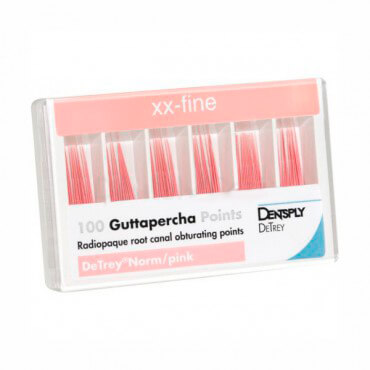
Go to Dentsply Gutta-percha Tips
You've now reached the end of our blog, which we hope has given you a concise and comprehensive summary of gutta-percha and what it is used for in the dental practice. It's incredibly useful material for dentists all over the world and we hope you've learned something new! If you have any comments or questions, we'd love to hear from you, send us a message through our social media channels or our website and we'll get back to you.
See you next time!





